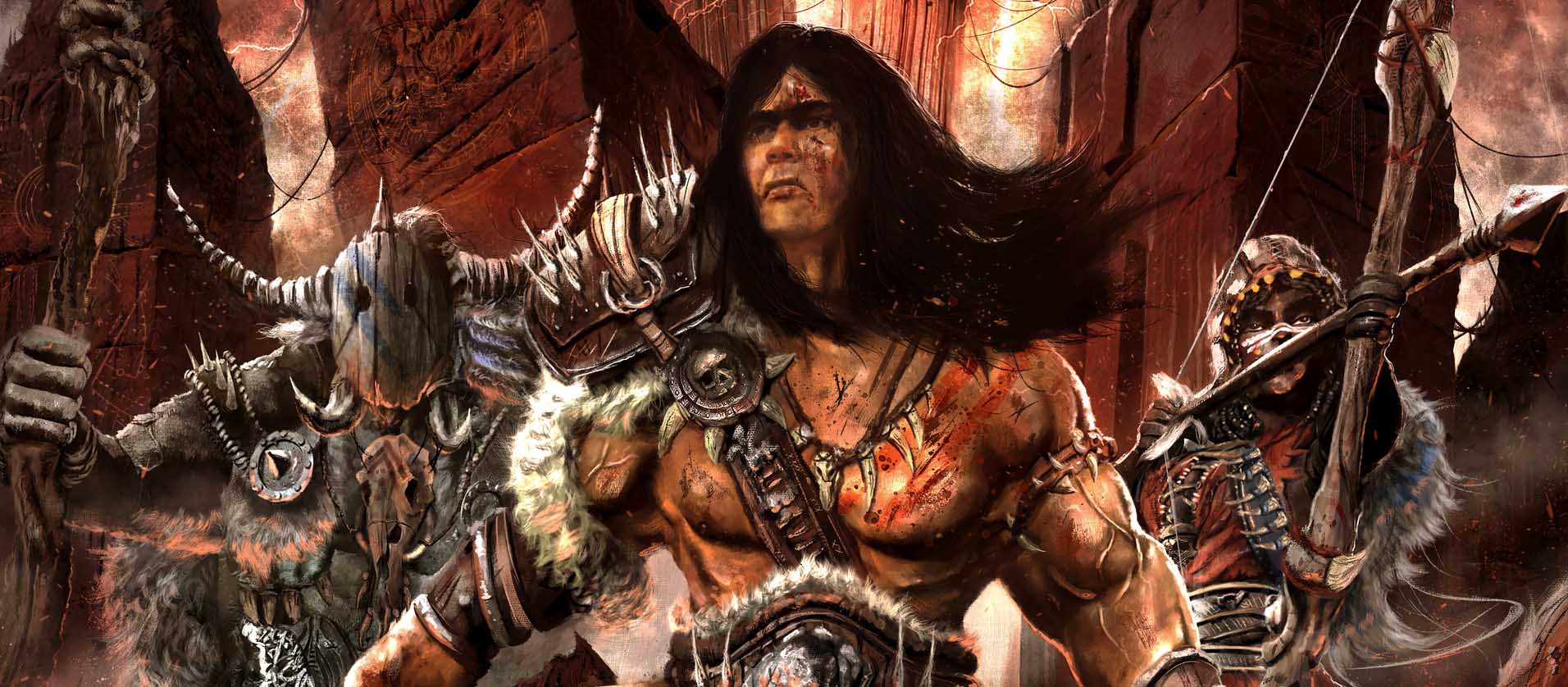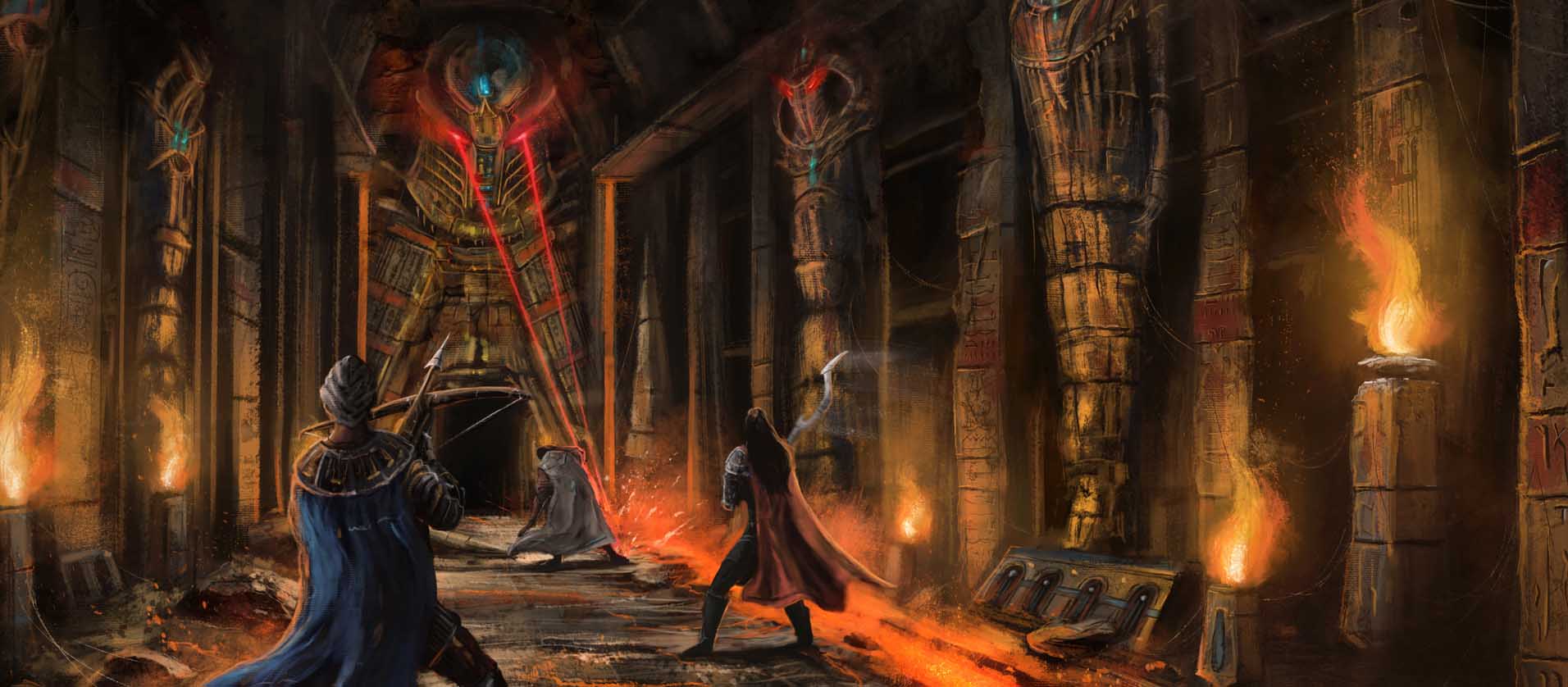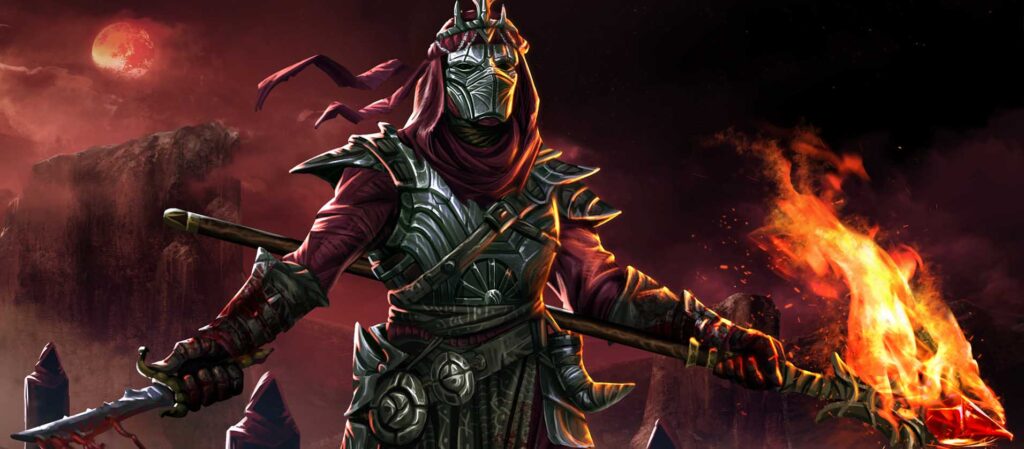Every tabletop RPG has an origin story and so does Blood and Doom. The game was born out of love for a rawer, grittier kind of fantasy – the kind in which human characters take on scheming cults, fight unnatural monsters and discover secrets hidden in a world filled with dark mysteries. For this first blog post we dive in deep with Blood and Doom’s creator himself; Ferruccio Argento.
On The Edge
Even though Ferruccio loves a wide variety of tabletop roleplaying games, he has a weak spot in his heart for Call of Cthulhu. Playing human characters in a world that is fantastical yet relatable ensures the experience of playing it is all the more immersive and events that transpire feel real and relatable.
‘To me, a game like Dungeons & Dragons has lost some of its mystique,’ Ferruccio says. ‘It used to be more obscure and cultish in the eighties.’ Even though he – and with him the entire Blood and Doom team – is grateful for the fact that D&D has become increasingly popular over the last decade, introducing more people to the hobby than ever, Ferruccio wanted to (re)create a different atmosphere than the original fantasy RPG currently exudes so well.
‘The title Blood and Doom indicates that our TTRPG is more out there on the edge,’ Ferruccio continues. ‘I’m hoping that it’ll give people the feeling that they used to have back in the day when they were first introduced to the older Dungeons & Dragons editions. I still love to GM D&D, but for my own game, I just wanted a different vibe.’

Rules & Setting
Blood and Doom originally began as a campaign Ferruccio created for another – Powered by the Apocalypse – RPG, but with influences from many other game systems. ‘It started after playing a lot of other roleplaying games, both crunchier and more narrative, such as Vampire: The Masquerade, Changeling: The Lost (Eloy Lasanta, who wrote its Second Edition, is on our writing team!), Index Card RPG, Call of Cthulhu, Numenera, FATE Core System and others.’
Ferruccio continues: ‘I wanted to come up with something that still retains the fun of a more rules-light game, whilst still offering enough crunch for players who love to develop their characters in mechanically interesting ways and who like more detailed combat that’s exciting both narratively and tactically. In addition, it was very important to me that the game’s setting would not be your vanilla fantasy world but would instead take inspiration from cultures outside of western Europe, like ancient Arabia, Persia and India, as well as Chinese, Malaysian and Japanese cultures, to name but a few.’
Creative Problem-Solving
From the get-go, Ferruccio knew he wanted to focus on action-packed combat as well as thrilling encounters with an emphasis on investigation and discovery. ‘A lot of RPGs feature strung-out combat encounters that seem to last forever. Blood and Doom’s combat, however, is all about high-risk, high-reward situations. They never devolve into extended marathons but are more like sprints. That being said, they also include compelling player options, cool weapons and powers, unique weapon properties, armor and versatile, easy-to-use magic – but we’ll delve more into that in our upcoming blogposts.’
Moreover, Ferruccio sought to bring players a game that promotes creative thinking and problem-solving. On the Game Master’s side (who is known as the ‘Doomsayer’ in Blood and Doom), this means 15 well thought-out Abilities as opposed to a more common 9, 6 or 3. Doing away with Dexterity, Wisdom and especially Charisma as a catch-all for character aspects that are way more nuanced was a big part of this process.
Stealth and Reflexes are no longer all ‘Dexterity’-based for example, and ‘Charisma’ has been replaced by Heart, Mystique, Courage and Willpower to diversify characters more than just being ‘socially adept’. Blood and Doom’s Abilities allow the Doomsayer to ask for rolls that are a bit more specific, which in all playtesting so far has turned out to be one of the most beloved parts of the game.
On the flip side, players can get creative with using their Skills, because in Blood and Doom the Doomsayer never asks to use a specific Skill. It is up to the players to have a look at their character’s Skills and see if in some way one of them could be applicable to what they are attempting to do.

Something For Everyone
Blood and Doom also aims at making the Doomsayer’s job easy and rewarding. The game is player-facing, of which Ferruccio is a big proponent, and the game’s mechanics are built from the ground up in such a way they hardly ever slow down the pace, while the setting presents information about the world, cults, monsters and NPCs ready to be ran by the Doomsayer with minimal effort.
The use of a dice pool mechanic to promote creative playstyles was a process that took well over a year of early playtesting to discover. In the end, adding and subtracting dice to a dice pool to represent various advantages and disadvantages (called ‘Edge’ and ‘Challenge’ in Blood and Doom) turned out to be the easiest and most intuitive way to keep the game both flexible and dynamic.
‘There’s so much more to say about Blood and Doom which can’t all be covered in just one blog post, but as we get near the completion of the final chapters I cannot be happier with the results I’m seeing and how the game plays. Its setting is unique and unlike anything out there at the moment, and with an ever-increasing desire for something different in our tabletop RPG settings I think Athyr (the world of Blood and Doom) has something to offer for everyone.’



